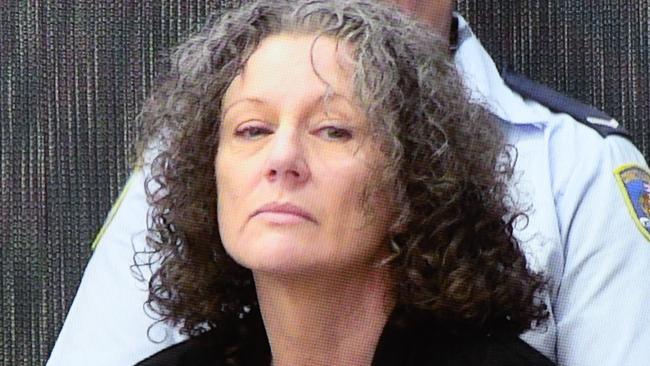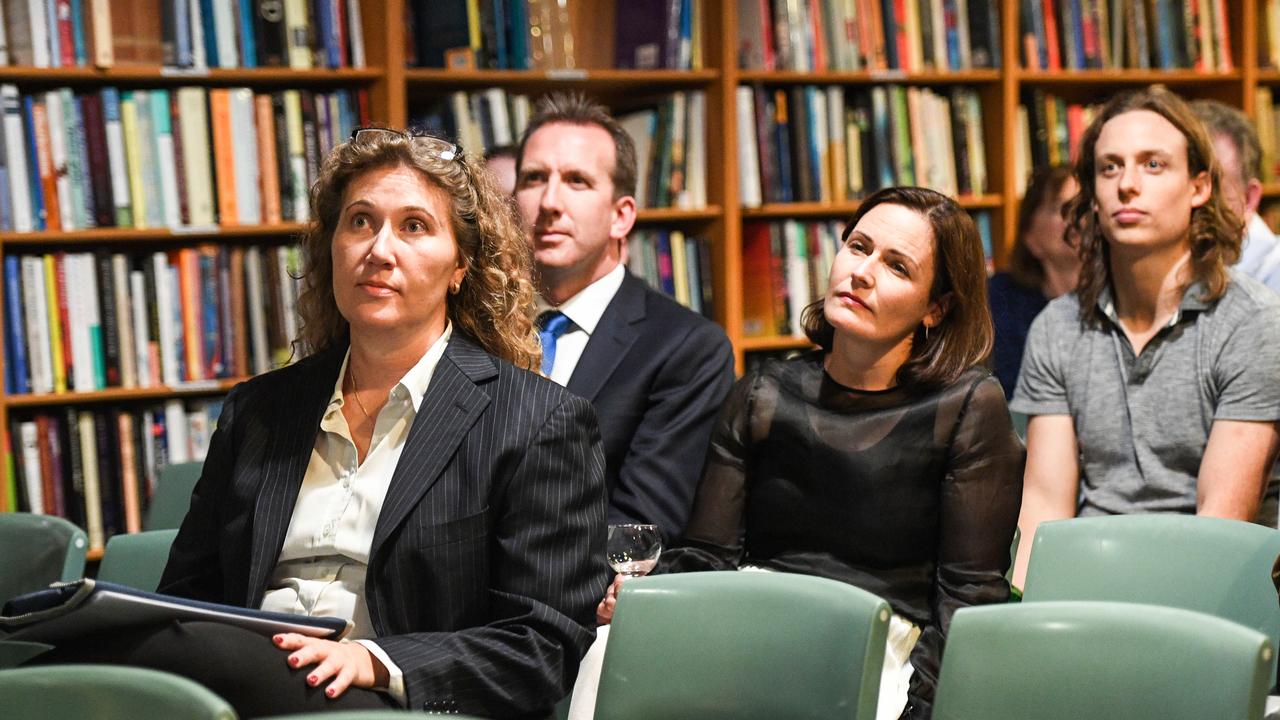Folbigg petition: Science thrown out of court
Why have judges rejected scientists who say Australia’s most notorious female prisoner Kathleen Folbigg is innocent?

At 10.10am on Wednesday, Australia’s most notorious female prisoner, Kathleen Folbigg, entered a room at Clarence Correctional Facility and sat at a table, facing a camera linked to a court in Sydney. Eight minutes later, looking slightly bemused, she stood up and left.
In the interim, NSW Supreme Court Justice John Basten had taken less than 45 seconds to dismiss an application made on Folbigg’s behalf to overturn the findings of an inquiry held in 2019 into her convictions for the manslaughter of her firstborn, Caleb, and the subsequent murders of her second child, Patrick, and her third and fourth children, Sarah and Laura.
A scathing written judgment from the three Appeal Court judges, justices Basten, Paul Brereton and Mark Leeming, confirmed the view of the commissioner who headed the earlier inquiry, Justice Reginald Blanch, that “there was an ample basis, consistent with the scientific evidence, for the judicial officer to conclude that there was no reasonable doubt as to Ms Folbigg’s guilt”.
The judges also suggested that: “This was not a case in which the judicial officer’s conclusion was at odds with the scientific evidence.”
What happened next was unprecedented. That afternoon, the Australian Academy of Science issued a statement directly contradicting the judges, saying: “There are medical and scientific explanations for the death of each of Kathleen Folbigg’s children.”
Academy president John Shine told The Australian: “Experts from around the globe have offered an evidence-based explanation for the death of the Folbigg children. It is time that this evidence be brought to bear in the Folbigg case. Any statement suggesting a contrary view should be backed with data. The Folbigg case calls into question the ability for the legal system to assess the reliability of expert evidence.”
Australian National University professor Carola Vinuesa, who gave evidence to the 2019 inquiry, went even further, describing Justice Blanch’s conclusions about the genetic evidence she had helped to present as “incorrect”, and the inquiry’s reasoning as “non-scientific”.
Or in other words, the judges got it wrong.
It’s clear that this is now a bare-knuckle fight between those scientists who believe that plausible natural causes of death have been established for all four of Folbigg’s children, and the judges who continue to reason that other, circumstantial elements of the case, combined with the anguished, ambiguous comments made by Folbigg in her diaries, leave no room for doubt that she smothered all four of her children.
The petition
The Appeal Court verdict comes less than three weeks after 90 eminent scientists — including two Australian Nobel laureates — signed a petition to NSW Governor Margaret Beazley, calling for Folbigg’s immediate pardon and release from jail.
That petition is based on peer-reviewed research published after Justice Blanch’s inquiry, which concludes that Folbigg’s daughters, Sarah and Laura, “likely” died of natural causes linked to a genetic abnormality, and it remains a live issue to be considered by the Governor and by the NSW Attorney-General, Mark Speakman, and his team. The petition and its new research were not referred to by the Appeal Court judges in their conclusions about the science.
Newcastle University Scientia professor emeritus Eugenie R. Lumbers told The Weekend Australian that in her view: “The conflict that exists between the legal system and science can be attributed to the rapid progress of new scientific knowledge. It is essential that the legal system takes a considered approach and places reliance on the expertise of scientists currently working in relevant specific areas of inquiry. ”
The challenge to the judges by the scientific community marks a significant escalation in the increasingly frosty relationship between medical and scientific expert witnesses, and the judges who assess that evidence.
This week, two expert witnesses who appeared on Folbigg’s behalf at the 2019 inquiry openly criticised the way in which they and their evidence were treated.
Newcastle University emeritus professor Robert Clancy said: “My experience in giving evidence at the 2019 inquiry was extremely stressful. I was subjected to a ‘vigour of inquiry’ that I found aggressive and beyond anything I had experienced in over 40 years as an expert witness.
“When I could not agree with incorrect and outmoded evidence given earlier, counsel asked me to provide a detailed report — which I did. Without my knowledge, relevant information in it was redacted.”
Caroline Blackwell, conjoint professor of immunology and microbiology at Newcastle University, says she had the impression the inquiry “was not aware of the complexity or the relevance of the information presented by Professor Clancy and myself”.
John Hilton, long regarded as one of Australia’s pre-eminent forensic pathologists, told The Weekend Australian that the medical evidence “certainly in one case, showed a clear-cut, obvious natural cause of death”.
That case was Laura, Folbigg’s fourth child, where Hilton and three other forensic pathologists all gave evidence to the inquiry that her death could be ascribed to myocarditis, a sometimes fatal inflammation of the heart muscle. Hilton describes it as a “strong probability”.
Laura’s myocarditis was also referred to by the cardiac geneticists who reviewed the case and who suggested it may have triggered her underlying genetic condition causing a cardiac arrest and her sudden death.
Hilton says: “For some reason or other, people have found it terribly hard to get their heads around this. They didn’t understand really what the medical evidence was saying.”
The science
This is now the main allegation being levelled at Justice Blanch, and at the Appeal Court judges who reviewed the genetic evidence that was presented to his inquiry — that they didn’t understand the science.
Law professor Gary Edmond, from the University of NSW, says: “If you were designing a system to facilitate an impartial review of a conviction, where the major issue is the biomedical evidence, would you appoint legally trained personnel to conduct, oversee and evaluate the evidence? Why do we have a legally trained chair, legally trained counsel assisting but no forensic pathologist, geneticist or statistician sitting on the panel?”
Referring to the genetic mutation, CALM2 G114R, which Vinuesa and her colleagues discovered in Folbigg and her two daughters, the judges acknowledged this week that: “The scientific evidence raised a theoretical possibility that there were innocent explanations for the deaths of the two girls.”
But, they argued: “Their circumstances departed from the reported cases of deaths associated with CALM abnormalities.” Compared with other cases reported in the literature, the deaths of Sarah and Laura were “outliers”, the judges ruled. One example was that “the girls apparently died suddenly when asleep and not during exertion”. A further example was the contention that they died at a younger age than other, known examples of CALM-induced deaths.
But Vinuesa begs to disagree. “In all four Folbigg children, there is credible medical and pathological evidence, including new peer-reviewed genetic findings, by an international team of 27 scientists published in a top international cardiology journal … that points towards natural causes of death,” she says.
This is the evidence that the scientists published in the highly respected journal, Europace — which Vinuesa believes was not adequately considered by the Appeal Court.
Vinuesa says that the Folbigg girls’ deaths were not outliers with regards to already known CALM-related sudden unexpected deaths.
On Friday, one of the world’s foremost cardiologists and cardiac genetics experts, Peter Schwartz, weighed in. He described the judges’ scientific commentary as “simply wrong”, adding: “It goes against the only serious data available, namely those of our International Calmodulin Registry.
“With over 100 patients enrolled, it is crystal clear that life-threatening or fatal events have occurred in infants and young children at rest or during sleep, and the majority occur without prior warning.” Vinuesa and her team discovered a different genetic mutation in the two boys, Caleb and Patrick, although the scientists acknowledge that here, further research is needed.
The judges’ conclusions implied that CALM mutations that are lethal in children are not inherited from healthy parents. But Schwartz argues that: “It is widely accepted in genetics that highly symptomatic infants can inherit the disease-causing mutations from apparently healthy parents or parents with mild disease. Consistent with the latter, Ms Folbigg had numerous transient fainting episodes (known as syncopes) during childhood and adolescence, including a witnessed syncope while swimming as an 11-year-old child, requiring her to be dragged out of the pool, which rules out it having been a ‘benign’ syncope.”
What next?
Folbigg’s fate now rests with the NSW Governor and the politically appointed Attorney-General, Mark Speakman.
Will they agree with claims by the Australian Academy of Science, that the scientific conclusions reached by the Appeal Court judges are flawed, or will they decide that the circumstantial evidence presented at Folbigg’s trial, and the evidence of her diaries, overrides these claims?
Edmond argues that: “NSW should have an independent criminal cases review commission — like England, Scotland and New Zealand.”
And he adds: “At one level, given the medical evidence, the diary entries may not even be meaningful. If there is no medical evidence suggesting murder or even deliberate harm, does it matter that a woman has written self-deprecating and adverse self-accusations? The ambiguous diaries must be read subject to the medical evidence. If the medical evidence does not support murder, then ambiguous diaries cannot operate as a makeweight.”
Blackwell says: “There have been significant advancements in science and medicine in the last 18 years. This is particularly evident in the field of genetics, which has led to groundbreaking findings that could not have been envisioned almost two decades ago. The law needs to be open to this progress. It also requires scientists to support the legal system in their understanding of the true cause of all unexpected deaths.”
Solicitor Rhanee Rego and barrister Robert Cavanagh, co-authors of the petition seeking Folbigg’s release, believe that the Appeal Court’s decision this week “should not impact on the petition for pardon of Ms Folbigg, which is currently under consideration by the Governor. The petition deals with matters not considered by the NSW Court of Appeal.”
Rego says: “One of the biggest tensions in our legal system is the varying levels of scientific literacy of those who preside over and appear in courtrooms.
“This can lead to fundamental errors in the assessment of scientific evidence … We must be conscious to listen to those experts who represent their field of expertise and treat with caution those who do not.”


